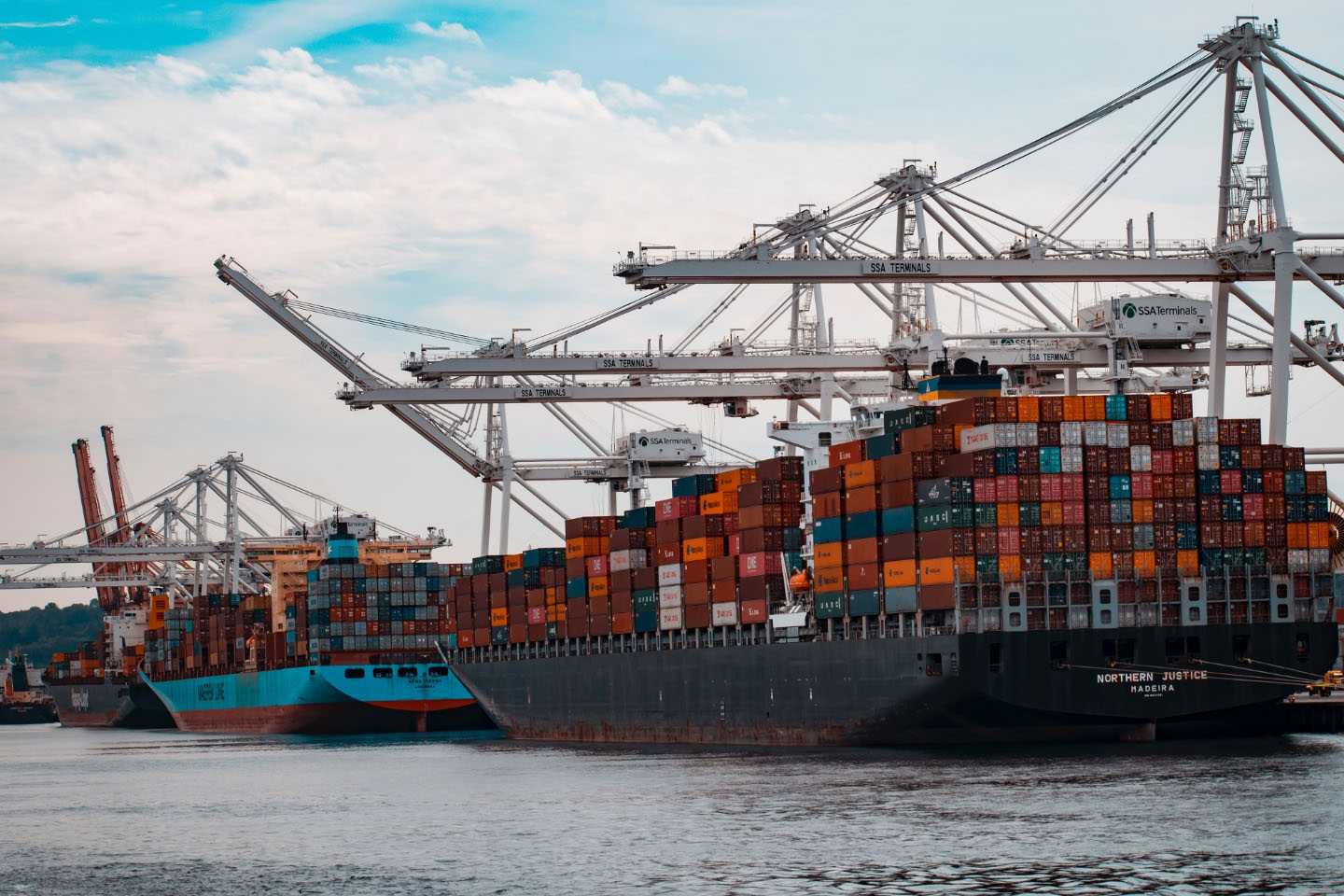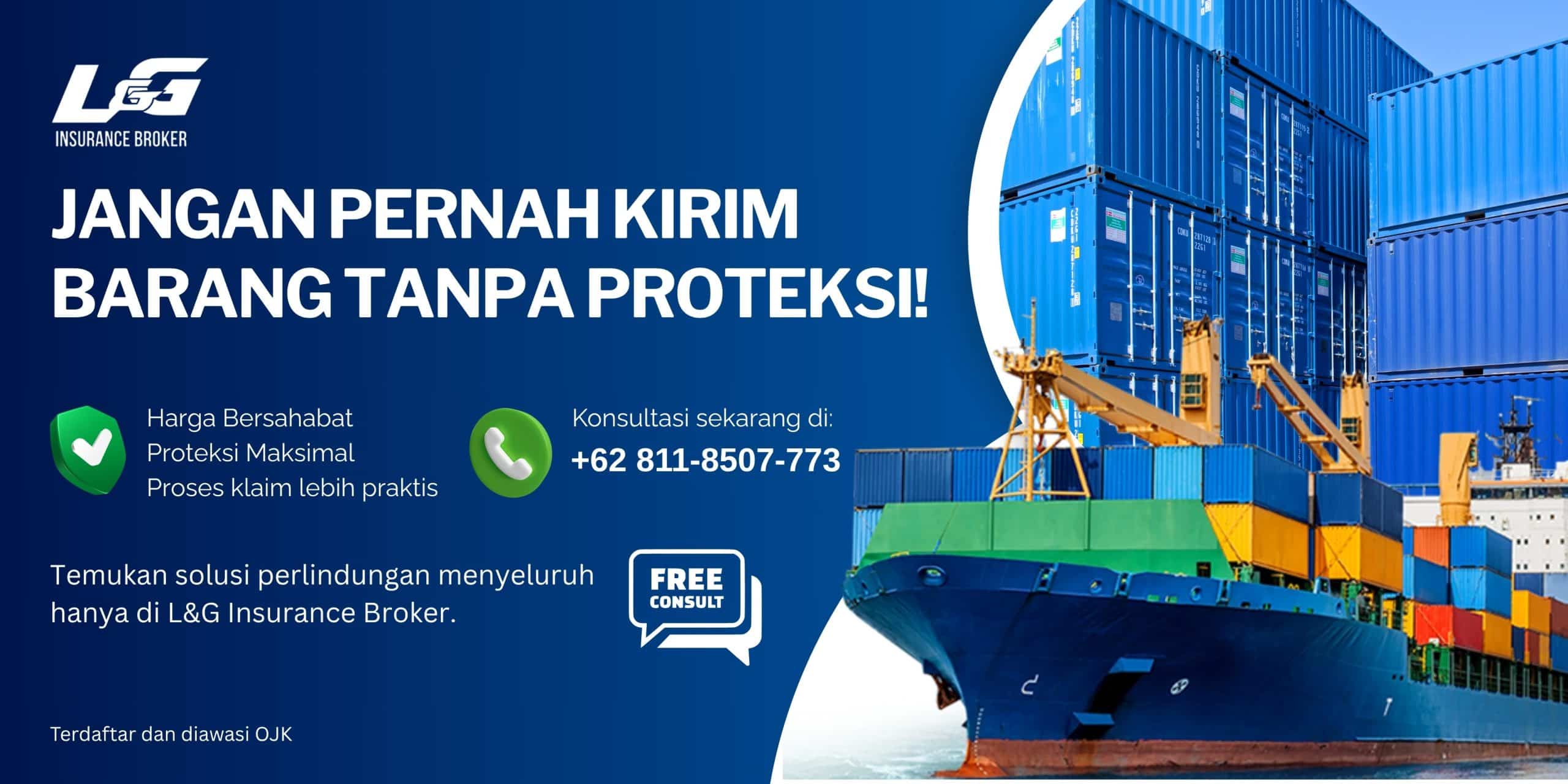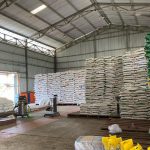Liga Asuransi – In the previous discussion, we have discussed various types of total loss and partial loss. This time, we will discuss the risks in freight insurance or commonly referred to as marine cargo.
Unfortunately, in many people there is a tendency to ignore preparations on how to reduce or even avoid unwanted risks.
As an insurance brokerage service, we want to ensure the safety of goods or cargo during the journey to their destination.
01/01/2001
Institute Classification Clause
QUALIFYING VESSELS
1). This insurance and the marine transit rates as agreed in the policy or open cover apply only to cargoes and/or interests carried by mechanically self-propelled vessels of steel construction classed with a Classification Society which is:
1.1. a Member or Associate Member of the International Association of Classification Societies (IACS*), or
1.2. a National Flag Society as defined in Clause 4 below, but only where the vessel is engaged exclusively in the coastal trading of that nation (including trading on an inter-island route within an archipelago of which that nation forms part).
Cargoes and/or interests carried by vessels not classed as above must be notified promptly to underwriters for rates and conditions to be agreed. Should before such agreement being obtained cover may be provided but only if cover would have been available at a reasonable commercial market rate on reasonable commercial market terms.
AGE LIMITATION
2). Cargoes and/or interests carried by Qualifying Vessels (as defined above) what exceed the following age limits will be insured on the policy or open cover conditions subject to an additional premium to be agreed. Bulk or combination carriers over 10 years of age or other vessels over 15 years of age unless they :
2.1. have been used for the carriage of general cargo on an established and regular pattern of trading between a range of specified ports, and do not exceed 25 years of age, or
2.2. were constructed as containerships, vehicles, carriers, or double-skin open-hatch gantry crane vessels (OHGCs) and have been continuously used as such on an established and regular pattern of trading between a range of specified ports, and do not exceed 30 years of ages.
CRAFT CLAUSE
3). The requirements of this Clause do not apply to any craft used to load or unload the vessel within the port area.
Free Translation
01/01/2001
Clause Classification Institution
MEETS SHIP QUALIFICATION
1). This insurance and sea transit rates as agreed in the policy or open coverage only apply to cargo and / or interests transported by self-propelled steel-fueled ships of steel construction classified by the Classification Society, namely:
1.1. Member or Associate Member of the International Association of Classification Societies (IACS*), or
1.2. National Flag Societies as defined in Clause 4 below, but only if the vessel is engaged exclusively in the coastal trade of that country (including trade on inter-island routes within the archipelagic state of which that country is a part).
Cargo and / or interests carried by ships that are not classified as above must be immediately notified to the underwriter for the rates and conditions to be agreed. If the loss occurs before the agreement is obtained, protection can be provided but only if the protection is available at a reasonable commercial market price on reasonable commercial market terms.
AGE RESTRICTION
2). Cargo and/or interest carried by an Eligible Ship (as defined above) exceeding the following age limits will be insured under an open cover policy or condition subject to an additional premium to be agreed. Bulk carriers or combinations over 10 years old or other ships over 15 years old unless they:
2.1. has been used for the transportation of general cargo with an established and regular pattern of trade between certain ports, and does not exceed the age of 25 years, or
2.2. built as a container ship, vehicle carrier or double-skinned open-hold gantry crane (OHGC) vessel and has continued to be used with an established and regular pattern of trade between certain ports, and does not exceed 30 years of age .
CRAFT CLAUSE
3). The requirements of this clause do not apply to any ship used to load or unload ships within the port area.
The risk level of marine cargo insurance is largely determined by the condition of the ship (ship construction), management experience (reputation management), work system (operating system), port facilities and the experience of the freight forwarder.
The following is an explanation of each of these factors:
- Ship construction
As we know, there are four types of construction, namely iron or steel, fiberglass, ferrocement and wood. Automatically the level of possible risk faced is different, where wooden construction ships are more dangerous than iron or steel construction ships. Generally used to transport loads only iron or steel and wood.
In accordance with the provisions stipulated in the Institute Classification Clause (ICC 1/1/01) that the ship carrying it must be able to move independently and be of iron or steel construction.
- Year of shipbuilding
The age of the ship is very influential, because the larger the ship is that it is no longer economical, the limitation of the economic period for ships in transportation insurance is a maximum of 15 years, it can be more than 15 years, but not more than 25 years if the ship is a ship. Coating ships, while for the construction of ships with a maximum of 15 years of wood.
- GRT (Gross Register Ton)
Vessels that automatically have a larger GRT will have high stability, so the possibility of risk will be lower than ships that have a small GRT. In accordance with the provisions specified in the Institute Classification Clause (ICC 1/1/01) that the ship carrying it must have a capacity to carry at least 100 tons.
- Management (Carrier Reputation)
Ship processing management is very influential in the operation of the ship, both for the ship itself and the load loaded on the ship. With good management, at least it will reduce the level of possible risk.
- Operation System
The amount of risk faced by the guarantor at the closing of this insurance also depends on the ship’s operating system.
- Liner Vessel
Liner Vessels are vessels that have permanent shipping routes and are announced in the media, so that the public can clearly know the ship’s schedule (departure date and arrival date).
- Trempher Vessels
Are ships that do not have route and are not announced in the mass media.
- Industrial
These are ships that are owned and only used specifically for transporting the goods belonging to the Insured. In the case of ships that are included in Regular Lines (Liner Vessel) and meet the provisions of the Classification Clause, they are considered to have less risk than Tramper ships.
- Port Facilities
What about the port facilities provided (delivery port or destination port), are they adequate or not? For example, shipping by container, but the port does not have a crane installation to lift the container, or the port is shallow so that large ships cannot lean on the dramaga, so the ship must release its anchor from the dock and the cargo must be loaded using barges to be carried to the dock.
- Freight forwarder (Reputation & Right of Subrogation)
How about the reputation of the Freight forwarder in the transportation business, is it running well and smoothly? because this is very closely related to the goods to be transported or carried, so regarding the settlement of subrogation rights, can it run smoothly?
To find out the amount of risk faced by the insurance company, it is necessary to know the amount of cargo on one ship that is borne by the insurance company. These are some considerations:
Accumulation of Risk
That is, to find out how much accumulated risk already exists and can be assumed by the insurance company on the ship, if the risk occurs.
Maximum Liability
That is, to find out how much maximum responsibility (liability) you have in shipping.
How to load and unload goods affects the level of risk. The better the lower the biggest accident retention. These are some of the loading methods. There are two ways of loading goods, namely:
On Deck, goods that are loaded on the Deck (On Deck) have a greater level of risk. Under Deck, Items that are loaded under deck or under deck.
In the event of an accident with the cargo being transported, as soon as possible submit a report to the insurance broker without waiting for a complete description of the incident. Claims for compensation in Marine Cargo Insurance must meet 2 (two) main requirements, namely:
The loss is guaranteed under the terms of the policy (Terms & Conditions).
It is as a result of the risks insured, or is a risk that is guaranteed (risk covered). Conversely, if the cause of the loss is one of the policy exceptions (clauses 4,5,6, & 7 in ICC 1/1/82), then the loss/damage that occurs is not covered by the policy or is rejected.
The loss occurs within the period of cover.
This means that the loss or damage must occur while the insurance is still valid, for that it is necessary to know the date of the loss/damage (date of Loss) whether it is still in the insurance period or not. . In Sea Freight Insurance, the provisions regarding the validity period of the coverage (Duration Clause) are stated in clauses 8 & 9 of ICC 1/1/82. Meaning
“Duration Clause”
In ICC 1/1/82, it provides an outline that the period of coverage starts from the time the goods are lifted for transportation from the sender’s warehouse or the place stated in the policy, taken to the port of delivery to the port of destination, unloaded and delivered to one of the one warehouse whether allocation warehouse, distribution warehouse or warehouse or a place designated by the Insured and stated in the policy, within 60 days after the last unloading at the port of destination (Port of Discharge)
For Shipping Insurance Always Use Insurance Broker Services
From the previous information, it is clear that the risk of shipping goods is very high and protecting goods by insuring them is “mandatory” if you do not want to lose because your product is lost and damaged along the way.
Getting the best insurance coverage is not easy. Extensive knowledge, experience and relationships in the insurance world are required.
It is best to always use the services of an insurance brokerage company. Insurance brokers are insurance experts who are on your side. They design insurance coverage, negotiate with several insurance companies and assist you in the event of a claim.
One of the leading and experienced insurance broker companies for shipping insurance is L&G Insurance Broker.
For all your insurance needs, contact L&G Insurance Broker now!
Source :
- https://lngrisk.co.id/glosari/percepatan-kapal-yang-mengangkutan-cargo/
- https://lngrisk.co.id/glosari/value-peranggungan-sum-insured/
- https://lngrisk. co.id/glosari/cara-pemuatan-loading-method/
- https://lngrisk.co.id/insuranceclause/klausul-asuransi-pengiriman-barang-institute-classification-clause/
—
LOOKING FOR INSURANCE PRODUCTS? DON’T WASTE YOUR TIME AND CONTACT US RIGHT NOW
L&G HOTLINE 24 HOURS: 0811-8507-773 (CALL – WHATSAPP – SMS)
website: lngrisk.co.id
E-mail: customer.support@lngrisk.co.id
—





















